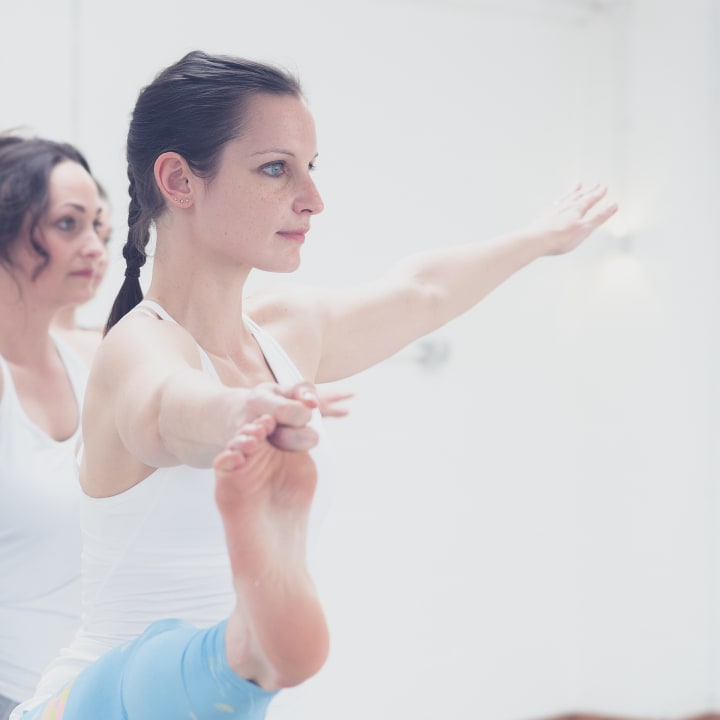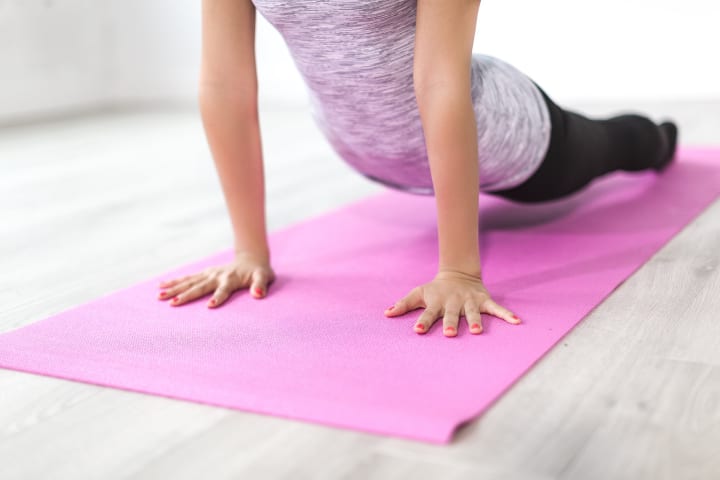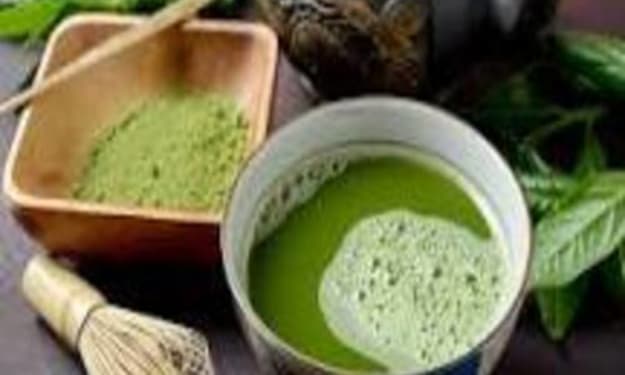Some Simple Hatha Yoga Asanas You Can Do At Home
Here are some daily yoga poses you can use for better health

Yoga asanas, or yogasanas, are the building blocks of any yogic practice, and these are linked together with a series of movements and pranayamic breathing techniques to create a balanced flow which brings many psychological, physical, and spiritual health benefits to the practitioner.
An asana in yoga is a term for a posture, which may be held for a short or long period of time, according to the type of yoga and pace of the practice. Mastering the basics of each asana is essential for building a yoga practice which works in harmony with the body and mind, reducing strain on the muscles and joints and promoting overall health and wellbeing.
Modern-day yoga in the West has become disconnected from its spiritual roots, which has led to the erosion of many of the basic principles of yoga. By overemphasising aspects of physical performance, and underestimating the value of the spiritual teachings behind the practices, Western ‘yoga’ has lost the essence of true yoga, which aims to promote a holistic balance between mind, body and spirit.
In this article, we will address the foundations of effective yoga practices - including the importance of breathing techniques and bodily and spiritual awareness - and outline how these principles can be combined with the Hatha asanas to build a balanced and comprehensive yoga routine.
Notes For Beginners
Practising the asanas is inextricably linked with bodily and spiritual awareness. Yogic practice is concerned with balancing opposing energies within the body to attain a state of higher awareness and harmony.
Pranayama is a Sanskrit word, loosely translated to ‘extension of the breath (life force)’, and is a fundamental principle of all yoga practices. By paying close attention to the breath through pranayamic breathing, we can notice how our bodies respond to movement, and more generally, stress from both our inner and outer worlds.
Pranayamic breathing focuses on regulating our in-breaths and out-breaths. While there are many forms of pranayama breathing, beginners should primarily focus on breathing in and out evenly through the nasal passage.
Unlike many forms of physical exercise, yoga is concerned with regulating the breath and slowly building our physical and spiritual abilities by doing what feels good for our bodies, without putting unnecessary pressure on ourselves. As such, we should move out of an asana and take a seated posture whenever our breathing becomes stressed and return to movement only when our breathing becomes regular.
By practising meditation in a seated posture, such as the Auspicious Pose, the Lotus Position (the Padmasana), the Hero Pose (Virasana) or by lying down in the Corpse Pose (Shavasana), we can ‘tune in’ more effectively to our breath and become more conscious of the effect of movement on our bodies. This allows us to channel our energies more effectively, and reduces the likelihood of experiencing discomfort or injury.

Fundamental Principles Of Yoga
Yoga at its essence is not considered a form of physical exercise, nor a religion; instead, it is more accurately described as a lifestyle. The asanas only comprise a small part of these teachings.
Swami Sivananda, the founder of the Sivananda school of yoga, condensed the ancient teachings into five core principles for physical, mental and spiritual wellbeing;
• Proper Exercise (Asana)
• Proper Breathing (Pranayama)
• Proper Relaxation (Savasana)
• Proper (Vegetarian) Diet (Vedanta)
• Positive Thinking And Meditation (Dhyana)
The Asanas
According to the ancient Hindu texts, Shiva taught the Asanas to every species on Earth. In the Sanskrit original, it was said that Shiva taught 8,400,000 yogasanas, one for every species on earth.
But, since humans were not able to learn all of the asanas, the Lord Shiva condensed the asanas into 84, 1 for every 100,000 species. However, few of these were described explicitly, and in the Hatha Yoga Pradipika, only 15 asanas were described in detail.
Here, we will go through 14 of the asanas detailed in the Hatha Yoga Pradipika, and outline how you can use them to achieve mind-body-spirit balance.
However, before beginning, make sure you’re working on these poses in a safe and hygienic environment. You will be in contact with your floorspace for a long time while practising the poses, and dirty carpets can contain all kinds of nasty bugs and diseases – none of which will help you to achieve a better state of body and mind!

Auspicious Pose
The Auspicious Pose is primarily used for meditation and pranayama breathing practices, and in meditative practice, is associated with the oneness of the universe and all beings, good fortune and peace.
This pose involves crossing both legs loosely, with feet on the creases of the thighs, and allowing the front calf to lay flat along the floor. This has the effect of stretching and flexing the ankles and promoting internal hip rotation, and is beneficial for stretching the hips and hamstrings.
The spine should be aligned in a straight position, without stiffness or tension. This allows for the prana (life force) energy to flow more efficiently throughout the body, and eases the breathing.
Cow Face Pose
Cow Face Pose (Gomukhasana) is a restorative yoga posture, used for opening the heart centre and the hips, which in yogic practice is used for alleviating anxiety and stress. In Hinduism, cows are considered sacred, and are associated with nourishment, divine protection, and the God Krishna - the Govinda or Gopala (‘Cow bringer’ or ‘Cow protector’).
The legs of the cow are said to represent the four Vedas, and her teats the four Purushartha including the dharma (morality and compassion), artha (material wealth), kama (pleasure or desire), and moksha (liberation). The face of the cow herself represents the sun and moon, which is associated with energetic balance.
In physical terms, the Cow Face Pose is used for stretching the hips and shoulders, as well as improving the posture and aligning the spine/ It is also used for treating sciatica and high blood pressure, massaging the kidneys, and reducing anxiety.
To take the Cow Face Pose, bend your left leg under your right leg, keeping your knees stacked, with your feet on your opposite hips. Take one arm above your head, keeping the other lowered and bend the elbows towards the centre of your back to interlock your fingers, creating a stretch across your chest and shoulders.
The Cow Face Pose is associated with the Heart (Anahata) and Root (Muladhara) chakras.
Hero Pose
Hero Pose, or Virasana, has many variations, including the reclined hero pose. In the original Hatha Yoga Pradipika, this is described as a cross-legged pose similar to a Half-Lotus, but in modern yoga, it is usually a kneeled position. Virasana is used for grounding through the root chakra, and is associated with the monkey Hanuman, the servant of Lord Rama.
This pose is simultaneously associated with power, self-control and humility before a higher power. The Hero Pose stimulates the Sacral (Swadisthana) and Root (Muladhara) chakras.
To take Virasana, sit in a kneeled position, with your legs together, and calves slightly to the side of the knees, pressed evenly to the floor. Your hipbones may reach the ground, or you can use a rolled towel or a yoga block to support your hips.
Tortoise Pose
The Tortoise Pose (Kurmasana) is used for quiet self-reflection and is associated with connecting with the inner world and the self. With the head bent to the floor, this pose removes distractions from the outside world, and provides a space for exploring the inner self, while promoting a sense of grounding through the root (Muladhara) and crown (Sahasrara) chakras.
The God Vishnu carried the tortoise on his back to save the world from the great floods, and as such, the tortoise is associated with protection, safety, and rest.
The Tortoise Pose is used for nourishing the respiratory system, the spine and lower back, and can help to provide relief from sleep disorders and asthma. It also helps to stretch out the inner thighs and back and shoulder muscles, and may help to tone the abdominals.
To adopt the Tortoise Pose, sit on your seat bones with your legs spread wide and heels flexed. Bending forwards, slide each arm beneath the corresponding leg, and bring your head as close to the ground as you can manage. Soften into the pose and find a quiet moment for yourself. From here, you can take variations, such as bending the legs so that the soles of the feet touch.
The Tortoise Pose in all its variations puts pressure on the abdominal muscles and lower stomach, and as such, should not be attempted by women who are pregnant or menstruating.
Inverted Tortoise Pose
There are many variations of the Inverted Tortoise Pose (Uttana Kurmasana), some more challenging than others. To take a simple variation of this pose, take a shoulder stand with the arms outstretched overhead. Gently lower the calves to lay flat along the floor, wrap the arms around the backs of the thighs and lower back and interlace the fingers.
The Inverted Tortoise Pose is used for promoting flexibility of the spine, stretching the muscles of the back and hamstrings, and stimulating digestion and circulation to the brain. This pose is used for enhancing self-awareness and fostering a sense of stillness and calm.
Rooster Pose
The Rooster Pose (Kukkutasana) in its full form is a slightly more challenging posture, with the full body weight supported by the palms which are flat to the floor, with the legs crossed around the elbows or forearms, or behind the arms, with the knees supported on the elbows.
For the purpose of a gentle practice, take this posture slowly, and build on it gradually. First, take a Lotus (Padmasana) position, with each foot on the crease of each opposite thigh, and place your arms through the crooks of your knees, with your palms flat to the ground.
From here, exert pressure through your arms, as if you were to lift your base off the floor. Practice this regularly until you are able to lift your sit bones, keeping your Drishti or gaze fixed on one spot straight ahead to centre your balance. From here, you can work towards taking the full posture.
The Rooster Pose is used in spiritual Yoga practices for removing energy blockages, and for activating the Muladhara (root) chakra, as well as raising Kundalini energy. This posture is an energising pose, which improves focus and motivation.
Bow Pose
The Bow Pose (Dhanurasana) is associated with the heart chakra (Anahata) and physical and spiritual power, and relates to two ancient Hindu texts, the Bhagavad Gita, and The Ramayana.
In the Bhagavad Gita, the archer Arjuna was forced to choose between going to war with his own family, or refusing to fight. Arjuna refused to go to war with his own family, and laid down his bow in defiance.
In The Ramayana, a divine bow was bestowed to the family of King Janaka by the Lord Shiva. This bow was so heavy that no mortal could lift it - that is, except for the King’s daughter, Sita.
When the King positioned that only a man strong enough to lift and string the bow could marry his daughter, only Rama was able to complete this task, winning the hand of Sita in marriage.
The Bow Pose is used for opening the heart chakra, and cultivating balance by finding the centre point, which stabilises the posture.
To practise The Bow, lie on your front with your legs stretched straight behind you. Extend your arms behind your back and catch your ankles with both hands. Use this pressure to extend your legs up and towards the back of your head, which will force your chest to open. Tilt your head backwards to lengthen along the throat and extend the chest stretch.
Fish Pose
The Fish Pose (Matsyana) is based on a Hindu myth, where a demon named Hayagreeva stole the four Vedas during the great flood, known as the pralaya. The God Vishnu, the Preserver, took the form of a fish to take back the Vedas from the demon’s clutches, and taught King Satyavrat to help him to rebuild the world.
The Fish Pose is another heart chakra (Anahata) opener, helping to promote feelings of love and compassion. The Fish Pose is used for promoting good posture, stretching the intercostal muscles of the chest, supporting the circulatory system, stimulating the kidneys and liver, and stretching the neck and shoulders.
Seated Forward Bend
The Seated Forwards Bend (Paschimottanasana) is associated with humility, and provides space to surrender to the internal world, in the practice of Pratyahara. By withdrawing our senses from the outside world and focusing inwards, we can build a level of internal awareness and work on self-improvement and reflection.
Practising Seated Forwards Bend regularly can help to overcome feelings of anxiety, depression, and agitation, reduce fatigue, and promote healthy sleep patterns. It can also help to balance the chakras and achieve energetic stability.
On a physical level, the Seated Forwards Bend helps to loosen the hamstrings and the backs of the calves, and strengthen the lower back, making it highly beneficial for sports activities which put pressure on the legs such as running, and those with conditions that can muscular tension. Bending forwards also helps to improve circulation to the heart and pelvic region, benefitting the adrenal glands and sexual organs.
To take a Seated Forwards Bend, sit with your legs outstretched and heels flexed. Bend forwards, extending your arms parallel to your legs and holding the soles of your feet.
Peacock Pose
The Peacock Pose is an advanced full-body arm balance that requires significant upper-body strength and balance. As such, Peacock Pose is not suitable for beginners. As this is an article about simple yoga poses, we will not go into detail regarding how to achieve the full posture here.
However, if you would like to challenge yourself, you may attempt this posture with modifications. The Half Peacock Pose is a good way to work up to a full Peacock, and helps to build your upper body strength.
Starting in Downward Dog, work towards bending your elbows towards the floor. If you are able to press your elbows to the ground in Dolphin Pose, raise onto your tiptoes and raise one leg, as if you were doing a three-legged dog.
Corpse Pose
Corpse Pose, Savasana, or Mrtasana, is in many ways, the easiest pose in yoga, but it has also been dubbed the hardest. While the pose simply involves lying on the ground or the mat, with arms outstretched by the side of the body and legs hip-width apart, it requires intense concentration and the ability to clear the mind to hold this position for an extended time.
The Corpse Pose is closely linked to death and rebirth in spiritual yoga practices. In this position, we practice letting go of thoughts, clearing the mind, and allowing the body to become one with the Earth, falling into a trance-like state. In Corpse Pose, we practice letting go of what is, what we desire, and ego death.
When we arise from Savasana, we practice being reborn, forming new associations with the world, and reawakening to reality around us. This pose helps you to work on your crown chakra, which is associated with concentration, memory, and the cerebral cortex, and promotes spiritual awakening, helping you to become more aware of your higher consciousness.
The Corpse pose is usually practised at the end of a yoga session, and is a relaxing pose that helps to manage feelings of anxiety and depression by calming the nervous system. This in turn helps to support the digestive and immune systems, lower blood pressure, and alleviate headaches and fatigue.
Lotus Pose
The Lotus Pose or Padmasana is another seated meditation posture, which opens the hips and stretches the joints of the hips, knees, and ankles. The Lotus pose is a grounding position, which is associated with the Goddess of Abundance, Lakshmi.
The Lotus Pose represents our growth from being rooted in the material plane, just as a lotus roots in mud to develop into a blooming flower. Ganesha and Lord Vishnu are also frequently depicted sitting in a Lotus flower, and the Buddha was said to grow Lotus flowers wherever he walked.
The Lotus Pose helps to activate the relaxation response (the parasympathetic nervous system) and deactivates the stress response (the sympathetic nervous system), and as such, is an effective pose for managing stress. This may help to lower blood pressure. It also helps increase concentration and awareness, and promotes good posture.
The Lotus Pose activates all the chakras, but is especially associated with the crown (Sahasrara) and root (Muladhara) chakras.
Lion Pose
Unlike many yoga poses which focus predominantly on the body, the Lion’s Pose or Simhasana focuses mostly on the face and hands. The Lion's Pose may be taken in a kneeling or a cross-legged position, and involves opening the mouth wide and forcefully exhaling a breath in a 'Ha' sound, with the fingers outstretched at the sides like claws.
The Drishti or gaze may be focused on the centre of the brow, or the tip of the nose. The Lion’s pose stimulates the crown (Sahasrara) and Third Eye (Ajna) chakras, and is symbolically associated with killing inner ‘demons’.
This pose helps to relieve tension in the neck and face, and provides emotional relief for those who are unable to vocalise their feelings effectively. This therapeutic technique stimulates the tonsils and the immune system, and helps to manage feelings of stress and anger. It may also have an anti-ageing effect, by stimulating the platysma, a muscle on the front of the throat which can cause the skin of the neck to wrinkle in older age. The pose also promotes circulation to the face, further enhancing its anti-ageing effect.
Gracious Pose
Gracious Pose or Bhadrasana is another hip-opening meditative seat, and is associated with the root or Muladhara chakra. It is one of the four seated postures recommended in classical texts for the practice of dhyana, as it can be adopted for prolonged periods of seated meditation. The Gracious Pose directs pranic energy upwards, which helps to soothe the brain and calm mental activity, making it an effective posture for stress reduction.
In physical terms, the Gracious Pose improves flexibility in the legs and joints, and strengthens the muscles of the lower body.
To take the Gracious Pose, adopt a kneeling position with the legs spread wide and allow the hipbones to touch the ground. You can use a yoga block or a rolled towel here to support the hips.
Now you know some simple yoga poses to help you achieve a better state of mental, physical, and spiritual wellbeing, why not try integrating your favourite ones into your daily routine?
About the Creator
Alexander Belsey
B2B magazine editor and digital marketer. I write about business, politics, economics, and wellbeing - sometimes all at once.






Comments
Alexander Belsey is not accepting comments at the moment
Want to show your support? Send them a one-off tip.